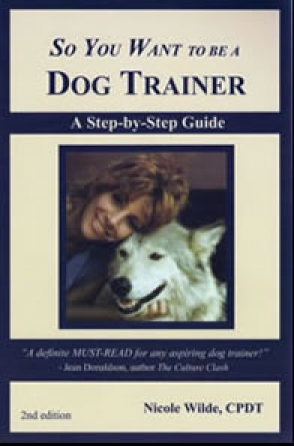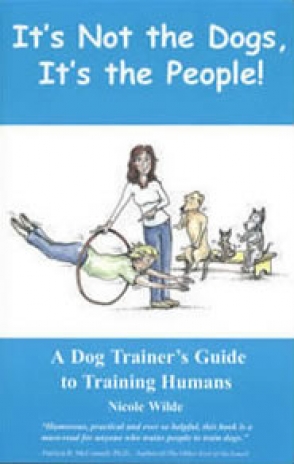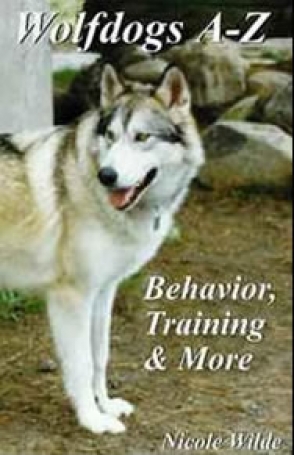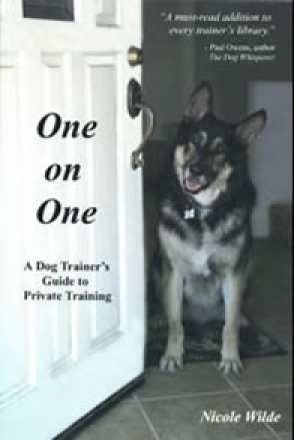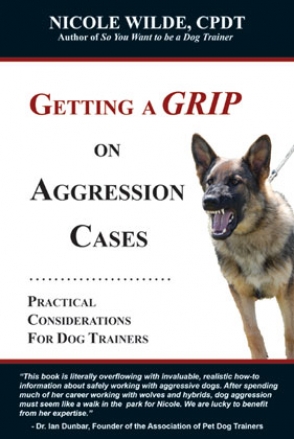This step-by-step guide contains invaluable resources for the aspiring or established professional dog trainer.
Bush's Barney Bites
A dog biting someone on the finger isn’t normally newsworthy. But when that dog is Barney, the Scottish terrier who belongs to President Bush, the world is bound to hear about it. Apparently, Reuters television White House correspondent Jon Decker was bitten yesterday by Barney when he reached down to pet him.
The video of the incident reveals that there were other people standing nearby at the time. You can hear their high-pitched voices trying to coax Barney’s attention—only Barney wasn’t responding. In fact, if you watch carefully, you can see the Scottie’s furry eyebrows moving as his eyes blink rapidly. Dogs often show this behavior when they are nervous. The fact that the dog never looked up or made eye contact should have been a clue that he wasn’t feeling sociable. The fact that he was on a leash and unable to retreat gave him no choice but to defend himself against what he perceived as an attack.
It’s not unusual for a dog to bite or snap when a hand comes down over his head palm-down the way that Decker’s did. The tendency to approach a dog in that manner is one reason so many children are bitten each year. (Hugging dogs, which is often perceived as restraint, is another.) In Decker’s case, there was the added element of surprise—the dog didn’t see it coming, and reacted defensively.
After the incident, as Barney stood licking his lips (another stress signal), a female voice on the video is heard saying, “What’s wrong with Barney today? He was snapping at everybody. Barney’s not feeling good. That’s not how Barney normally is.” We then see Decker being interviewed, holding up his bandaged finger. (The bite broke the skin, requiring Decker to get antibiotics and a tetanus shot.) At one point the reporter says, “Did you know that you weren’t the first person he snarled at today? There was a photographer that he snarled at today.”
Reviewing this incident, there were four main factors that led to the bite:
1. Barney was not feeling well.
2. Barney had already snarled at someone else that day, so the stress hormones released by that incident were still circulating in his system. In other words, the first incident lowered his usual tolerance levels, and what might have otherwise been an air-snap toward Decker turned into an actual bite.
3. The approach was hand-down over the head.
4. The hand surprised Barney.
This type of incident is not at all uncommon, and Decker is probably no less informed than many Americans. Dog bites happen every day, to adults as well as to children. Of course, we do not expect social, well-trained dogs to bite. But any dog who is pushed far enough will bite, just as any human, if pushed far enough, will fight back. It is our responsibility to recognize the signals that dogs are giving, and to respect their space when they want to be left alone.
Here are ten common signals that a dog is nervous or would like to be left alone:
1. Yawning
2. Licking the lips
3. Gazing downward or away, or avoiding eye contact
4. Turning the head and/or the entire body away
5. Scratching
6. Sniffing the ground
7. Stiffness in the muscles; tense body
8. “Whale eye,” where the whites of the eyes are very visible
9. Rapid blinking or pronounced, slow blinking
10. Panting, or the mouth being closed tightly
These signals should not be interpreted individually, but in conjunction with the rest of the dog’s behavior. While Decker’s bite was unfortunate, it is a good reminder for all of us to be aware of what dogs may be trying to tell us.

